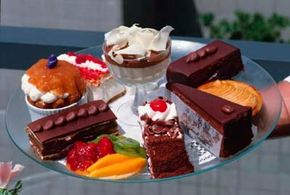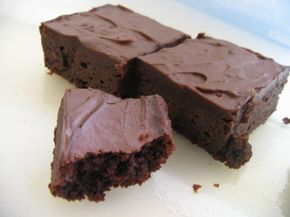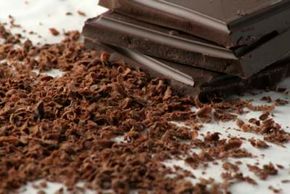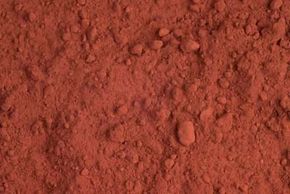Q. What is the best way to melt chocolate?
A. Melted chocolate is the luscious coating on a scoop of vanilla ice cream or the dazzling drizzle on a plain cookie. Getting to the perfect state of melted chocolate is the first step to killer brownies and many cake recipes.
It takes only minutes to change chocolate from its solid state to a velvety pool. There are a number of convenient ways to melt chocolate. However, heating it can be tricky and requires your full attention.
The cocoa butter in solid chocolate -- the other component being cocoa powder -- is the difficult diva. Cocoa butter melts at about body temperature (which you already knew if you've ever held an unwrapped chocolate bar in your hand). If you heat chocolate at too high a temperature, it "seizes," separating into liquid cocoa butter and clumps of cocoa powder, or it can even burn.
To add to the challenge, bittersweet and semisweet chocolate -- which you'll find in baking chips and fine chocolate bars -- can be heated to a slightly higher temperature than milk chocolate or white chocolate. When professional bakers melt chocolate, they may use a candy thermometer to keep dark chocolate between 100°F to just under 120°F and white or milk chocolate at no more than 115°F.
You, however, probably don't need to be so technical. Simply dip your finger into a pool of chocolate -- it should feel no warmer than your skin.
Following are several methods for perfectly melted chocolate. You may chop the chocolate, if necessary, into small even-sized chunks so that it melts quickly and uniformly.
- Water bath: Fill a large skillet with water, and heat to just below simmering. Place the chocolate in a heatproof bowl, such as stainless steel, and place the bowl in the water. Gently and constantly stir the chocolate while keeping the water below simmering.
- Double boiler: Fill the bottom half of a double boiler with water, making certain the bottom of the top half doesn't touch the water. Bring the water to a simmer. Place the chocolate in the top half, and place over the simmering water. Be careful that the water doesn't boil or splash into the chocolate, because any moisture will cause it to seize.
- Microwave oven: Place room temperature chocolate in a microwave-safe bowl. Microwave at medium power. The chocolate won't completely melt, but it will turn glossy and soft to the touch. Remove from the microwave and stir to finish melting. Microwave 1 ounce of chocolate for about 90 seconds; 6 ounces for about 31/2 minutes, stopping halfway through to stir the chocolate. Since times are approximate, always start with the suggested melting time and repeat in 30-second intervals.
Once you've melted chocolate, use it immediately. If necessary, you can hold chocolate over a bowl of warm water for a short time.
Q. What do I do if I've made a mistake when melting chocolate?
A. Splattering water on melting chocolate or overheating it can be disastrous, causing it to seize. If that happens, here's what you can try: Add a taste-free vegetable oil (canola, not olive) or warm water by the teaspoon to the melted chocolate in a saucepan. Stir constantly until the chocolate returns to a smooth state.
Burnt chocolate is another matter. Its harsh, bitter taste will ruin whatever you're making. Discard the chocolate and start again.
To learn about baking chocolate, continue to the next page.
For more information about chocolate, see:




